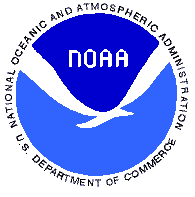
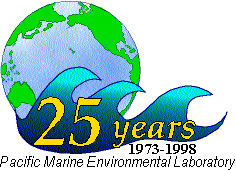
 |
US D.O.C. / NOAA / OAR / ERL / PMEL / 1998 Science Review |  |
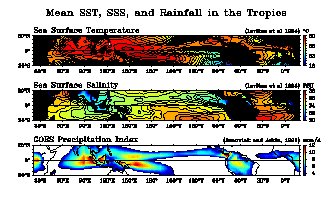 |
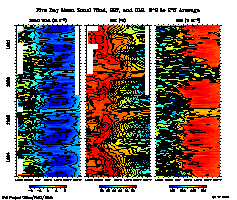 |
|
|
Accomplishments:
|
The TOGA Coupled Ocean Atmosphere Response Experiment Enhanced Monitoring Array The EMA was the product of a multinational, multiagency effort. For approximately 2 years (August 1991 - April 1994) the TAO array was enhanced to monitor:
| 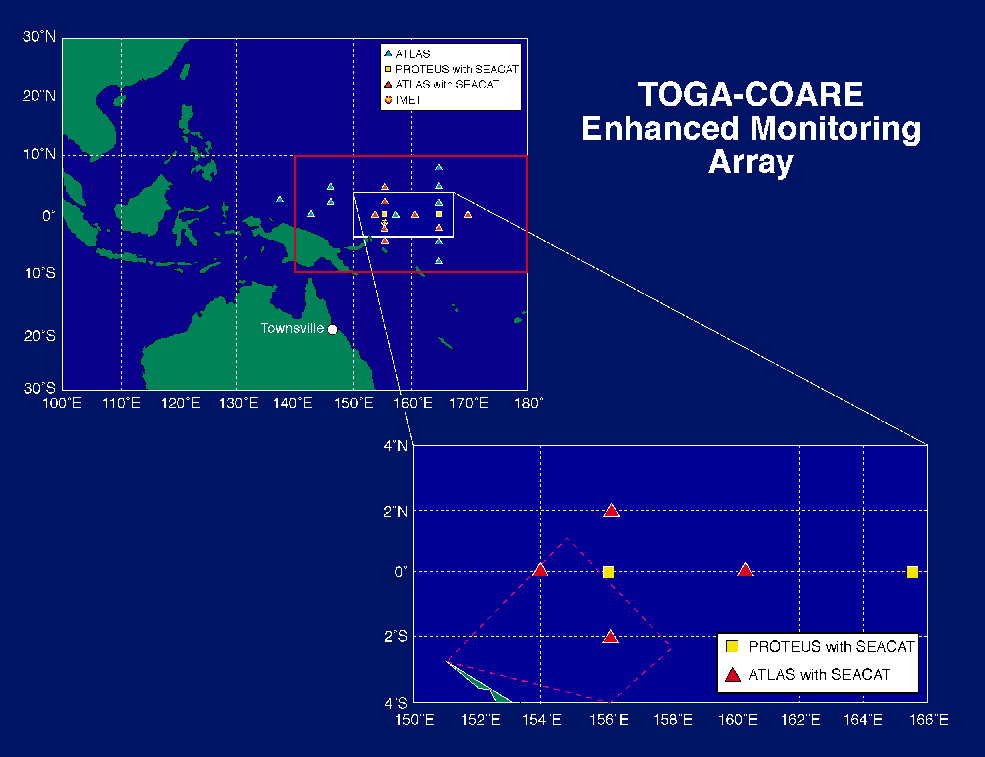 |
The bulk fluxes are computed using the COARE
version 2.5b bulk algorithm.
Heat Balance Analyses
The atmosphere and ocean are coupled by surface heat fluxes which both
affect and are affected by SST. The upper ocean heat balance was
evaluated to determine the processes responsible for SST variability.
To see the heat balance analyses, press here.
Salinity Balance Analyses
Salinity affects the stratification and buoyancy of the layer and thus
can affect SST by inhibiting mixing, changing the effective heat capacity
of the layer, and by increasing the amount of penetrative radiation. Because
SST variability can affect the rainfall, we must understand the salinity
variability and its affect on SST in order to understand the full hydrological
cycle. To see the salinity balance analyses, press
here.
Momentum Balance Analyses
Zonal advection is an important process in both
the surface heat and salinity balances. The large scale intraseasonal
atmospheric convection are associated with westerly wind bursts which force
the surface currents. To see the momentum balance analyses,
press here.
Future Directions:
Enhance TAO array in the eastern
tropical Pacific as a part of the NOAA Pan American Climate Study program.
Likely enhancements include radiometers and rain gauges, current profilers,
and subsurface temperature and salinity with increased horizontal and vertical
resolution. With these data, processes which couple the atmosphere and
ocean in the eastern tropical Pacific stratus deck region and ITCZ/cold
tongue complex could be analyzed.
|
Meghan F. Cronin Pacific Marine Environmental Laboratory 7600 Sand Point Way NE Seattle, WA 98115 USA |
Return to: Meghan Cronin's Home Page DOC | NOAA | OAR | PMEL Privacy Policy | Disclaimer |